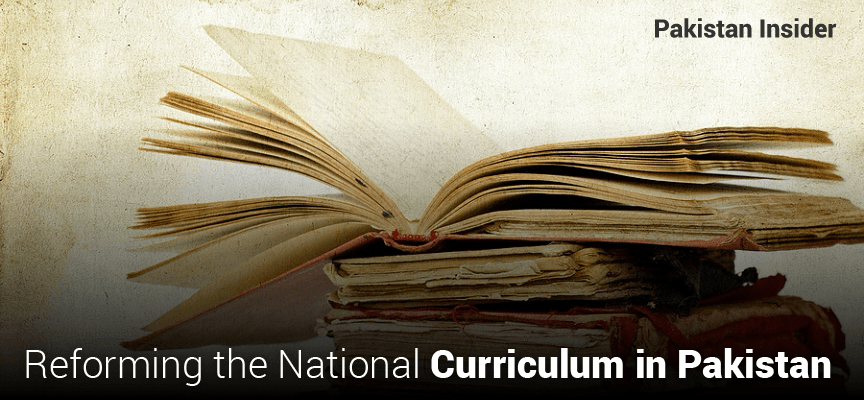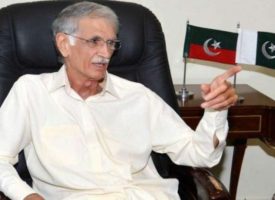According to the latest available statistics, Pakistan’s literacy rate is still at a grim 58%. And yet as a whole, the products of this quoted percentage (educated students) also do not have any notable achievements to bring forth, with the obvious exception of a very few men and women.
Like many other countries, Pakistan’s education system comprises of the Primary, Secondary, Higher Secondary, Intermediate, Undergraduate, Postgraduate and Doctorate levels. The first three levels are in schools, whereas the remaining four can be pursued in colleges/universities or a combination of both. Students in Pakistan are famous for memorizing whole lessons instead of actually understanding their concepts; the drive to attain “maximum marks” compels them to brush basic understanding and analytical abilities aside to generate sufficient merit for admission into reputable public and private-sector institutes; ironically, they use the same approach for the remainder of their academic life.
The education problem in Pakistan has much to do with the archaic, grossly orthodox and monotonous content found in the curriculum of various compulsory subjects. For example, English is littered with syllabus which looks colonial by age, Pakistan Studies is filled with distorted, biased narratives of history and Science subjects have copy-pasted compilations from various yet objectively different sources, exhibiting great inconsistency and redundancy.
The curriculum in schools is developed by provincial textbook boards, suiting their particular needs and requirements. This brings us to another issue in which respective provincial textbook boards develop syllabus which contain content promoting provincialism. Students in each province are given briefers about other provinces but their own province as highlighted as somewhat “superior” and “more rich in history” than their other counterparts. Thus since the very first lesson, a child is taught that the province he is living in is better off than others. Similarly, there are narratives on the History of Pakistan which seem credible, such as Muhammad bin Qasim’s invasion in Sindh, etc, but the way in which minority communities are humiliated and mentioned in bad words in these books is simply derogatory and an insult to the non-Muslim community (particularly the Hindus). Intolerance, thus, also emerges in Pakistan Studies curriculum.
In colleges as well, curriculum is developed by academics. They lack in quality because of improperly-defined course objectives. What students are told to gain from a particular course is impossible because the syllabus which they are given is chock-full of information poorly rewritten from existing books authored by Western scholars. A ‘nationalized’ approach towards understanding and achieving course objectives, particularly in view of Pakistan’s potential strengths and capabilities, is missing.
When undergraduates from colleges (or from schools, in case of O/A levels) enter universities, course books authored by foreign authors are recommended to them. Their teachers/professors and notes deliver to-the-point information on each concept but ultimately, the student is given the freedom to decide which books he would like to opt for to complete his course, from the list of ‘Recommended Books’.
This is where the dichotomy in curriculum leads to severe confusion. Students who are accustomed to reading specific locally-developed or Cambridge/Oxford textbooks are left out in the wild (options of curriculum) and told to survive for themselves on huge, stuffy 600-paged books and extract “useful knowledge” from them. What their teachers/professors lecture in classrooms is drastically different from what is listed inside their recommended books. As a result, these university students have either one of two options: follow their subject teacher and make brief notes or follow the book. Since teachers/professors in Pakistan have their own little following of students, they provide occasional tips to students on what exam papers will contain; thus a student who has to choose one option naturally opts for the teacher because they wouldn’t want to remain isolated and “left out” from the batch in general who will somehow manage to advance.
The Federal Ministry of Education is responsible, for among other things, curriculum development. The National Bureau of Curriculum and Textbooks (NBTC) has the mandate to supervise curriculum and textbooks. It approves and maintains certain standards for the curriculum from the primary to higher secondary levels.
It also has the responsibility to ensure that provincial curriculum development efforts are well-coordinated for ensuring national cohesion and projecting a unified Pakistan in the hearts and minds of students.
The objectives of curriculum development in Pakistan are derived from recommendations made in the National Education Policy. That such a policy has been recently clearly outlined and revised keeping in view the country’s current situation is yet hidden from the public eye. It is damning to note that the last education policy to be formulated in Pakistan was in 2009 (6 years ago).
The key factors determining scheme of studies in Pakistan are:
1. National Education Policy
2. Market Demand
3. Global Issues
Once these factors are kept in view, subject experts along with psychologists and academics publish syllabi. But as mentioned above, the inconsistency among provinces when it comes to a fair and balanced representation of provinces alongside the federation of the state are missing; this raises some serious reservations:
1. Is national cohesion and integration of provincial interests ensured while developing national curriculum?
2. Is a standard framework for curriculum development actually implemented in institutes across Pakistan, or have provincial textbook boards been given de facto authoritative status to act on their own?
One of the major issues faced in the curriculum development and implementation process in Pakistan is regulation. The syllabus often goes against do’s and dont’s issued in official curriculum development manuals. The most embarrassing example surfaced recently when “Seraikistan” and “Hazara” were mentioned as provinces in textbooks. Authorities have so far claimed they will take ‘strict action’ against the people who committed these blunders; we will have to wait and see what measures are put in place to ensure such a thing is never again repeated.
The Higher Education Commission of Pakistan (HEC) is an autonomous, constitutionally-empowered institution of funding, overseeing, regulating and accrediting higher education initiatives in Pakistan. With reference to Section 3, sub-section (1) of the Federal Supervision of Curricula Textbooks and Maintenance of Standards of Education Act 1976, the Government of Pakistan mandated HEC as the competent authority to supervise curricula and textbooks beyond Intermediate (Class 12) level. In this regard, a National Curriculum Revision Committee (NCRC) was constituted. Vice Chancellors of all public and private universities, R&D organizations, colleges and industries, etc were asked to nominate their representatives for appointment in the newly-established NCRC.
The last time NCRC published revised curricula was in 2012-13; some of the most commonly opted subjects whose curricula was revised include Chemistry, Computer Science, Economics, Math, Pakistan Studies and Mass Communication. But a closer look at the Pakistan Studies revision (2012-13) for a 4-year BS program, for example, shows how the focus on a purely Islamic orthodox approach towards national politico-socio-economic issues still persists. Perhaps the only major revisions made are the list of recommended books. This is not to suggest that Islamic ideals and values should be removed from the course altogether; on the contrary, it should be presented in a way that non-Muslim Pakistanis can also relate to it without the cost of their own religious identities.
The only time Islamic Studies’ curriculum was revised was during the 2008-09 period. Considering the amount of tribulations Pakistan has faced since that period, especially in the form of religious extremism and militancy, should focus not have been placed on completely revising the Islamic Studies curriculum to promote inter-sect and inter-faith harmony and peaceful coexistence?
One has to ask elected representatives on why the NCRC stopped revising curricula after 2013. Has the pace of educational advancement stopped or have the authorities and all concerned stakeholders decided to call it a day? Will we witness a new National Education Policy during the current government’s rule?
Conclusion
Many readers will find the article above to be inconsistent and vague; unfortunately, this is exactly the state of affairs in Pakistan’s education system and especially the most crucial curriculum development wing. In her op-ed for Brookings published on January 16, 2014, Madiha Afzal highlighted the failed efforts for curriculum reform in Pakistan and ended her observations/suggestions with in the following words:
“What is clear is that we need another curriculum reform, one that actually works. The minimal aim: remove historical and other errors and biases from the curriculum, and ensure that it does not violate the Constitution. Better still: create tolerant, analytical citizens who can think rigorously and critically. What is my confidence level that the current government will be the one to undertake such a reform? Given their misguided policy pronouncements on the education and curriculum issue so far — taking private schools to task for teaching comparative religion, proposing Arabic as a compulsory subject to counter terrorism — the unfortunate answer is: close to zero.”
One can only hope that the federal government in Islamabad gives serious thought to reforming the national curriculum, and also oversee provincial setups at a time when the country is struggling to instill some sense in its citizens.
To ensure a brighter and educated Pakistan with men and women of sound mind and knowledge, it is imperative that curriculum reform be undertaken on war footing.








Absolutely True
this is the real picture of curriculum in Pakistan.it is a good comparative study. in Pakistan curriculum should be developed according to social and economic needs.